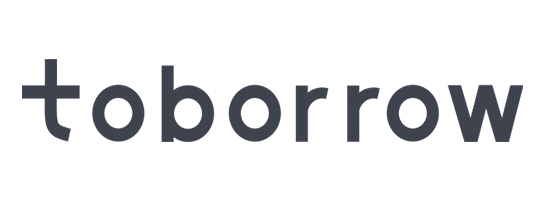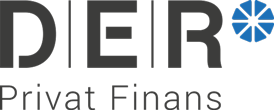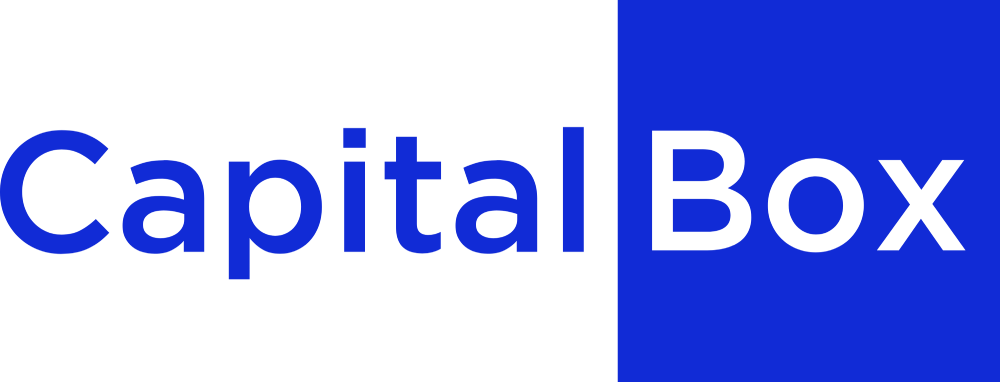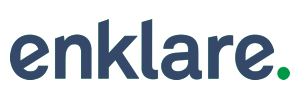The Best Mortage Loans in Scandinavia
Compare the best Mortgage loans in the Nordics. We help you find all types of financial solutions for your future home loan or any other type of financial aid that you may required.
Apply Now
Compare Mortage Loans
Filter

Toborrow Private Loans Review
4.7/5
Loan Amount
15000 € – 600000 €
Interest Rates
6.13% – 33.9%
Repayment Period
2YR – 20YR
Trygga Review
4.7/5
Loan Amount
500 € – 60000 €
Interest Rates
4.95% – 25.95%
Repayment Period
1YR – 20YR

D:E:R Finance Review
4/5
Loan Amount
1340 € – 20105 €
Interest Rates
18.58% – 20.98%
Repayment Period
2YR – 8.5YR

CapitaBox Review
4.3/5
Loan Amount
2000 € – 350200 €
Interest Rates
2.5% – 30%
Repayment Period
1YR – 15YR

Hypoteket Review
4.6/5
Loan Amount
30000 € – 2000000 €
Interest Rates
1.25% – 4.85%
Repayment Period
1YR – 5YR

Enklare Review
4.5/5
Loan Amount
1000 € – 600000 €
Interest Rates
3.56% – 29.87%
Repayment Period
1YR – 16YR
Borrowing money costs money!
If you cannot repay your debt in time, you are in the risk of receiving a record of non-payment. Having a record of non-payment means that you could experience difficulties to rent an accommodation, take out a subscription or being granted new credits. For support, please contact a Budget and Debt Advisor in your municipality. You can find contact details at konsumentverket.se.
Understanding Mortgage Loans: A Comprehensive Guide
Mortgage loans, a substantial aspect of Nordic financial landscape, provide individuals an opportunity to purchase residential real estate by spreading the cost over a defined period and making regular repayments. Commonly referred to as “boliglån” in Denmark, “boliglån” in Norway, and “bolån” in Sweden, they have consistently played a critical role in facilitating homeownership across Scandinavia. As per a 2020 Statista report, approximately 35.9% of the total loans granted by Monetary Financial Institutions (MFIs) in Denmark were home loans, while Sweden had a slightly lower percentage at 27.6%.
Getting into the specifics, Scandinavia’s mortgage market is known for its diversity in rates. Customers can opt for fixed-rate mortgages, where the interest rate remains static throughout the loan term, or variable rate mortgages which fluctuate in line with the market rate. In Denmark, a unique feature of the mortgage system is the preponderance of the bonds market. Danish mortgage lenders issue bonds to finance the loans, and the interest on these bonds forms the mortgage’s interest. As per the Central Bank of Denmark’s record, fixed-rate mortgage loans accounted for 51% (approximately DKK 843 billion) of the outstanding loans by the end of 2020, making them a favourite amongst Danish home buyers.
Eligibility Criteria for Mortgage Loans in Scandinavia
In Scandinavia, qualifying for a mortgage loan relies on meeting a set of stringent criteria. Many banks set their standards based on factors such as the applicant’s income, employment status, credit history, and the nature of the property to be mortgaged. Specifically pertaining to Sweden, a variable-rate mortgage is an attractive option for many due to lower interest rates at the onset. However, according to the Swedish Financial Supervisory, the benchmark reports an average income requirement of around SEK 519,000 (approx $61,000) per year to qualify for an average-priced property.
Navigating the mortgage application process in the Nordic region presents its unique challenges. Particularly in Norway, first-time home buyers should be prepared to provide a minimum down payment of 15%, according to the regional regulatory framework set by the Norwegian Ministry of Finance. The acceptance rate for a mortgage in Norway is reported to be around 74% according to a recent study by Finance Norway, illustrating the relatively high standard for loan approval. This illustrates the need for potential homeowners to have a secure financial foundation before initiating the mortgage application process to maximize chances of loan approval.
Interest Rates Decoded: Fixed vs. Variable Rates
When exploring home financing options in Scandinavia, one of the primary distinctions you will come across is the choice between fixed and variable interest rates. The unique nature of these rates significantly shapes the repayment strategy for a mortgage loan over its term. The fixed interest rate, as the term suggests, remains constant throughout the loan tenure. This means that your monthly installments are predictable, providing you a firmer control over your budget and long-term financial planning. According to Statista, approximately 62% of the homeowners in the Nordic region opt for fixed-rate mortgages, indicating the desire for financial stability in this volatile market.
In contrast, variable-rate mortgages, also known as adjustable-rate mortgages, are tied to the Nordic bank’s mortgage rates. That is, the interest rates fluctuate according to the changes in market interest rates. While this subjectivity to market conditions means there is an inherent risk of payment increases, it also opens up opportunities for cost savings if the market rates drop. For instance, data by the Swedish Land Register shows that variable-rate mortgages enabled numerous borrowers to reduce their repayment amounts significantly during the interest rate declines between 2012 and 2016. As prospective applicant for Scandinavia property loans, understanding these variations is imperative for making an informed decision.
Nordic Banks and Mortgage Offerings: Who Offers What?
Scandinavia, revered for its extraordinary contribution to global economies, also hosts a diverse banking sector catering to various mortgage needs. Specific banks differ in the mortgage products they offer based on the applicant’s mortgage loan eligibility in the Nordic region. For instance, the Danske Bank in Denmark provides different types of housing loans with variable interest rates (%), granting opportunities for individuals to select as per their financial scenario. Conversely, Nordea Bank in Sweden has a significant emphasis on sustainable home loans, encouraging environmentally friendly practices. In 2020, Nordea reported a decrease to a 1.25-1.5% targeted lending rate for these eco-friendly mortgages, seeking to prompt more responsible borrowing behavior. However, it is also worth metioning that interest rates have hiked between 2020 – 2023, and while green loans remain a very smart choice, these interest rates are of the past. In 2023 Green Mortage loans have reached as high as 4.5% and an additional 1% amortization.
Understandably, the landscape of mortgage pitfalls in Scandinavia varies greatly. Sweden, for instance, has seen a continual trend of low home loan interest rates, with average rates dipping to an all-time low of 1.37% in 2020. This becomes a magnet for first-time buyers who potentially overlook the long-term commitment associated with an initially low-interest mortgage, thus encountering potential financial strain when rates shift. Similarly, mortgage loan policies in banks like Danske Bank and Handelsbanken in Norway can differ, thereby influencing the repayment dynamics and possibly introducing a set of unique challenges for the unprepared borrower.
First-time Home Buyer? Tips to Ease Your Mortgage Journey
Entering the world of home ownership for the first time can indeed be a daunting experience, particularly when it comes to understanding and navigating the complexities of mortgage loans. Relevant mortgage loan terms in Denmark, Norway, and across Nordic region can be challenging for first-time buyers to comprehend. These terms include interest rates, down payment, amortization periods, and many others. A 2018 study by Danske Bank revealed that 37% of first-time homebuyers in Denmark found the mortgage loan process confusing and overwhelming. The statistics only reaffirm the importance of familiarizing oneself with the process and terminology to secure a successful mortgage loan.
Securing a home loan in Norway and across the Nordics necessitates meticulous preparation and knowledge. First, an understanding and accurate evaluation of personal financial health is imperative. It encompasses assessing one’s credit score, savings, debt-to-income ratio, and job stability. Second, understanding the market trends, both current and forecasted, can greatly influence a buyer’s decision regarding the loan type and timing of the loan. A ‘Mortgage loans guide’ designed for Nordics suggests comparing offers from various banking and non-banking institutions to ensure the best possible interest rates and loan terms. The guide also underscores the importance of seeking expert financial advice, particularly in complex circumstances, to assist in making informed decisions.
Common Mortgage Loan Terms Explained
Navigating the terrain of Nordic real estate loans can be complex, particularly for those unfamiliar with certain jargon used in the mortgage industry. Translating these terms to everyday language can demystify the process, providing critical clarity for potential borrowers. Key terms include ‘principal’, denoting the original loan amount; ‘interest’, the cost of borrowing; ‘amortization’, the process of gradually repaying the loan over a set term, and ‘refinancing’, which involves replacing an existing loan with a new one, usually at a lower interest rate.
Data from The Swedish Financial Supervisory Authority shows Sweden is one of the leading countries in Scandinavia for home purchase financing. As such, understanding mortgage terms is vital in this region. Immersing oneself in Mortgage loans FAQ Scandinavia can aid in gaining insight. The ‘loan-to-value ratio (LTV)’, representing how much of the property’s value is loaned, ‘credit score’, indicating the borrower’s creditworthiness, and ‘equity’, representing the homeowner’s stake in the property, are also important mortgage terminologies that dictate loan approval and rates. With a comprehensive understanding of these terminologies, prospective homebuyers can make informed decisions in their property financing endeavors.
Mortgage loan jargons are key identifiers in the home financing sector. Putting these terms under the scanner would provide homebuyers with insights, a sure step towards owning their dream property in the Nordics. Whether you are a first-time buyer or looking to climb up the property ladder, guidance through these terminologies can pave the way for a smoother mortgage journey.
Application Process: Securing a Mortgage Loan in the Nordics
Securing a mortgage loan in the Nordics calls for a thorough understanding of the application process, such that informed decisions can be reached. This begins with seeking professional mortgage advice. In Denmark for instance, 72% of applicants found initial consultations with mortgage experts pivotal in their journey towards owning a home, according to a 2019 survey by the Danish Mortgage Bankers’ Federation. These experts provide vital insights into the mortgage landscape, eligibility requirements, and potential pitfalls, vastly increasing the approval odds of your application.
To further optimize the process, it’s prudent to conduct a Scandinavia mortgage comparison. A report by the Nordic Financial Unions highlighted significant variations across Nordic regions in terms of interest rates, payment plans, and loan-to-value ratios. By scrutinizing these variables, applicants can identify their most affordable and suitable mortgage option. Additionally, they can leverage free online tools, such as mortgage calculators provided by banking institutions, to aid in this comprehensive mortgage comparison. This, in turn, eliminates potential future financial strains stemming from unfavorable mortgage conditions.
Pitfalls to Avoid: Mistakes in Applying for Mortgage Loans
Understanding the complexities of mortgage loan applications is vital to avoiding unnecessary pitfalls. One commonly encountered mistake is not checking credit scores prior to application. As a 2019 Experian report indicates, nearly 30% of home loan applicants are unaware of their credit score status, putting their chances of approval at risk. Low scores signal potential risks for lenders, often leading to higher interest rates or even outright rejections. Knowing your credit score therefore helps in properly aligning with lender prerequisites while also offering an opportunity to improve it if necessary.
Another mistake is failing to consider the long-term implications of choosing between fixed and variable interest rates. Choosing incorrectly, depending on the market flux, can result in paying substantially more than necessary over the course of the loan. A 2018 study published in the Journal of Financial Economics highlighted that fixed-rate mortgages saved households in Denmark an average of 335 Euros per year, showcasing the potential savings of a well-informed decision. Hence, understanding how rate types work, and seeking professional advice where needed is crucial in navigating the tricky terrain of mortgage loans.
Mortgage Loans in Sweden, Denmark, and Norway
Securing a mortgage loan in Scandinavia could be a daunting endeavor due to the variations in banking regulations and economic environments across Sweden, Denmark, and Norway. However, understanding a few common guidelines may provide some clarity and help streamline the decision-making process.
For instance, one of the most common inquiries pertains to the eligibility criteria for obtaining a mortgage loan in these countries. In all three countries, one must either be a resident or have a concrete connection, such as employment in the specific country. Average interest rates also differ; as of 2023, Sweden offers some of the lowest rates in europe at approximately 3.8%, while Denmark rates hover around 5.16%, and Norway’s mortgage interest rates average 4.66% . The predominant type of mortgage loans used varies across these regions as well. Swedish and Danish banks predominantly offer variable-rate loans, while fixed-rate loans dominate Norway’s mortgage landscape. Smart comprehension of these dynamics can significantly facilitate the mortgage loan acquisition process in these regions.
